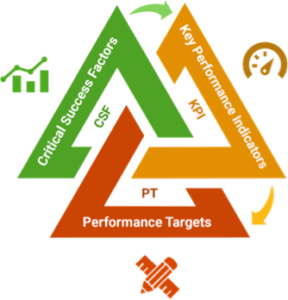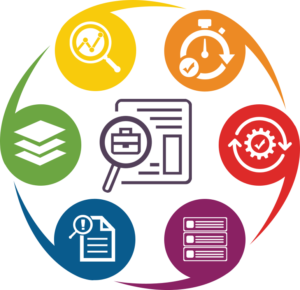Techniques and Tools of a Business Analyst
Business Analysis Foundation
- Instructor-led, Online
- Course Category: Business Analysis, Product Management, Agile Methodologies
GBP
45
Instructor-led, Online
Duration: 2 hours
Course Code: TXV-BAF-3636
Skill Level: Beginners
Techniques and Tools of a Business Analyst
Overview
Business Analysts traditionally have been thought of as requirements specialists and document writers. This is more so with the onset of the IT systems development viewpoint, where the BAs played the role of mediators between business and the development teams. However with the increasingly changing landscapes of business, technology, professional and personal life styles, the roles and contributions of analysts also are shifting rapidly. Besides the traditional tools and techniques, there is a spate of new-age tools that have sprung up to suit the emerging needs of analysts, offering a host of benefits to the BAs and teams. To learn and get your hands on these handy tools and techniques, enrol now to TEXAVI’s BA Techniques and Tools course!


Who can attend?
- Anybody with or without work experience
- IT professionals (eg., Developers, testers) considering a move to BA role
- Non-IT people who want to learn IT skills thinking of a career switch
- Graduates and university students who aspire to get into IT industry
- Students who have just passed their B. Tec, A-Levels or college studies
COURSE OUTLINE
- Overview and setting the context
- Overview on the BA techniques & tools
- Do’s and don’ts for BAs
- Busting myths & misconceptions around BA
- Requirements management-User stories etc.
- Essential techniques & tools
- Estimation, prioritisation
- Prototyping and wireframing
- Data modelling and analytics
- Summary – Q & A

What will you learn?
By the end of this course, you will be able to:
- Explain the tips, do’s and don’ts for the BA in performing their roles
- List and explain the various activities, techniques and tools during different stages:
- Understanding – Root cause analysis, 5Whys, Mindmap, interviews etc.
- Analysis – SWOT, feasibility analysis, use cases, workflows, business rules etc.
- Definition – User stories, scenarios, mockups, user profiles, personas etc
- Modeling – Prototypes, wireframes, UML diagrams, Risk models, Data models
- List the different techniques useful for BAs in the data gathering activities
- Describe the use cases and application scenarios for the elicitation techniques:
- Interviews
- Workshops
- Observations
- Focus groups
- Prototyping
- Scenarios
- Document analysis
- Special purpose records
- Surveys/questionnaires

- List and explain the digital tools and software applications for business analysts
- Documents, presentations and spreadsheets – Microsoft Office Suite, Apple iWork
- UML modelling – Microsoft Visio, TogetherSoft, IBM Rational Suite
- Prototyping and dynamic storyboards – iRise, inVision, Axure RP
- Mindmaps – Freemind, Miro, Lucidspark, Canva
- Wireframes and mockups – Balsamiq, Figma, Draw.io, Gliffy
- Data modeling – ER/Studio Data Architect, Microsoft Visio, Enterprise Architect
- Specify the languages and notations used in modeling systems and processes
- UML – Unified Modeling Language: [for systems and applications]
- BPMN – Business Process Modeling Notation: [for processes and activities]
- Elaborate on the use cases and application scenarios for UML:
-
Applications – architecture, structure, behaviour
- Business processes – structure, flows, tasks
- Data – structure, model and relationships
-
- Mention the various diagrams in UML that BAs and teams can create:
- Use case diagram
- Activity diagram
- Sequence diagram
- State chart diagram
- Package diagram
- Class diagram
- Object diagram
- Component diagram
- Deployment diagram

- Define what data modelling is and explain analytics and business intelligence
- Describe the importance of estimation and prioritisation in agile projects
- List the different techniques in requirements management
- Discuss measures and metrics for implementing strategies:
- Critical success factors (CSF)
- Key performance indicators (KPI)
- Performance targets (PT)

- Describe the use cases for BPMN:
-
Steps and stages in a process
- Start-to-end flow and sequences involved
- Transfer of messages amongst the process components

-
- Explain the myths and misconceptions in business analysis
- Elaborate on the creation of models, prototypes, wireframes and mockups in projects
What do you need?
There are no pre-requisites for this course. There is no need for any prior experience, working knowledge or awareness of software development or projects experience. The course is suitable for experienced professionals working in the industry or academia, aspirants and early stage professionals, as well as students in universities and colleges. Professionals and aspirants from technology, business, operations or sales are all welcome to explore and understand about the tools and techniques available for business analysts.
WHAT'S INCLUDED?
|
 |
Why Texavi?
Learn real-world, practical skills from practising professionals, not just theoritical knowledge from trainers!
-
TEXAVI is a proven leader in delivering non-coding IT learning, worldwide
-
We are not just trainers, but practising IT professionals with 25+ years of work exp
-
Our courses get you job-ready with practical and real-time insights
-
Qualify for certificates upon completion and complete our assessments
-
Pave way for industry-recognised certifications
-
Access to treasure of Texavi’s high-quality, content-rich resources and materials
-
Get discount voucher to our popular courses on Udemy
-
24×7 access to Texavi’s interactive platform with personalised content
Sample Course Video
TEXAVI Tests
Test Your Knowledge

Take the Texavi Tests and challenge yourself, simply click the below links and start the interactive quiz…
Trainer Profile

Your trainer for this course is Pardha Saradhi Mantravadi. Pardha is a seasoned and well-qualified trainer, coach, mentor, influencer and thought leader. He has rich and varied IT-industry experience of 25 years, working in different roles as an IT professional with blue-chip organisations viz., HSBC, Deutsche Bank, Dyson, Asda, Cambridge University Press, Roche, King’s College London , Royal Society of Chemistry etc. Pardha delivers his training sessions by blending the concepts and principles with practical insights from real-life projects and programs…click here to view the complete trainer profile.
Reviews
“The delivery was consistent, thoughtful and measured. Texavi’s masterclass worked well for me.”
– Louise Caldwell, OMT Group
“I enjoyed the bootcamp and found it very inspiring. I found your description of digital transformation very useful and I liked the examples that were given about successful digital businesses.”
– Dr. Carrie Mowatt, Royal Society of Chemistry
“What I like most about Pardha is the way he easily blends empathy for users within day-to-day software development tasks. This mix of vision and execution is rare and powerful.”
– Sarbajit Sen, Steelwedge Software
“Recently Texavi conducted a workshop on Agile methodologies. The trainer’s knowledge on Agile methodology has its roots grounded in experience.”
– Tazeen Sheikh, Mastek
” The trainer is very well-informed. I learnt a lot of background to digital transformation and artificial intelligence and how businesses can use them.”
– Robert Bowles, RSC
“I attended Texavi’s training on Agile Business Analysis and had a lot of takeaways from the session. Pardha’s effective presentation skills supported with context you can relate to, makes the entire experience exhilarating.”
– Abhijeet Majumdar, Zensar Technologies
“The workshop was quite interesting. I found the exercises we did particularly valuable, as it was useful to discuss with the others present, and to then feedback to the wider group.”
– Holly Sheahan, Cambridge Partners
“Excellent speaker, very knowledgeable. Lovely manner and gentle approach.”
– Linda Clifford, Marketing Success
“Texavi has delivered a fantastic product which was above expectations. The ISBE DataHub will support operational and strategic efforts, at the same time reducing the burden of work for staff at KCL.”
– Christine Manoharan, King’s College London
“The workshop was quite interesting, liked the practical and interactive parts. Texavi’s Digital Business Maturity Model is really helpful and necessary for success.”
– Julio C Garcia, Creanto
“The trainer, Pardha is professional yet very friendly, made everyone feel welcome.”
– Chantal Gilbert, BusyBee Consulting
Related Courses
Texavi Toolkit
Team TEXAVI created relevant videos, podcasts, blog posts, white papers, posters and articles for your use. Check the below content out to understand more about the techniques and tools for business analysts:
- All business analysis techniques in one place
- How to select the right technique or tool for business analysis? Watch the animation video
- Get it right with the new-age BA techniques and tools
- Busting the myths and misconceptioons around business analysis – Texavi White Paper
- Myths & facts in business analysis – Guest Speaker Arvind Arcot’s blog post
- Presentation on business analysis techniques and tools
